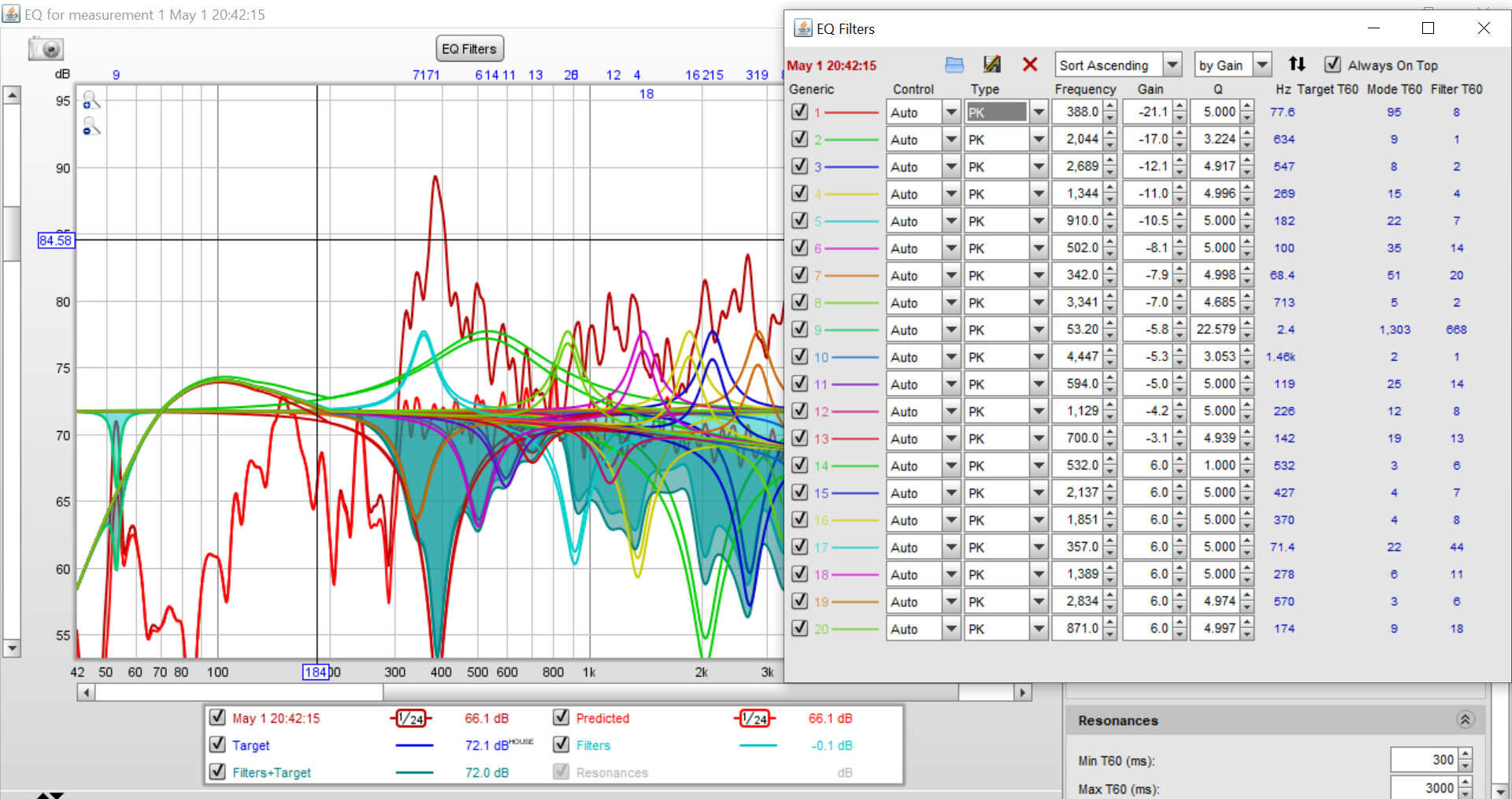I own both the Yamaha WXA50 and the Arylic A50+. Two small form factor “all-aboard” modern amplifiers that are reasonably priced. I use the Yamaha downstairs and the Arylic upstairs
There is a function on the Yamaha called ‘enhancer’ that spices up the mids and adds slight harmonic distortion. Kind of comparable to a signature a valve amp could have. It colours it in a slight way, but it is a likeable and subtle (as the graph shows) setting in my opinion.
User Jahuzi on this forum measured the direct output vs the enhancer of the Wxa50/Wxc50
 Recently I bought the ACP workbench tool for the Arylic amp. I did this mainly in order to be able to set the crossover of sub port a fraction lower than the sub itself would allow, allowing it to connect it precisely to my Denton 85ths. Below a random screenshot of the app, it shows a lot of potential in fine tuning.
Recently I bought the ACP workbench tool for the Arylic amp. I did this mainly in order to be able to set the crossover of sub port a fraction lower than the sub itself would allow, allowing it to connect it precisely to my Denton 85ths. Below a random screenshot of the app, it shows a lot of potential in fine tuning.

Now I was wondering about something else to do with it. Room correction would be a next step but that will still take some studying on how to take good measurements.
Besides that I came across the Wxa50 enhancer graph of measurements already done, as shown in the first picture a while ago and wondered if it that signature is copyable or that measurements of a good valve amp are somehow 1:1 copyable.
Anyone experience with any workbench software in this context?
There is a function on the Yamaha called ‘enhancer’ that spices up the mids and adds slight harmonic distortion. Kind of comparable to a signature a valve amp could have. It colours it in a slight way, but it is a likeable and subtle (as the graph shows) setting in my opinion.
User Jahuzi on this forum measured the direct output vs the enhancer of the Wxa50/Wxc50

Now I was wondering about something else to do with it. Room correction would be a next step but that will still take some studying on how to take good measurements.
Besides that I came across the Wxa50 enhancer graph of measurements already done, as shown in the first picture a while ago and wondered if it that signature is copyable or that measurements of a good valve amp are somehow 1:1 copyable.
Anyone experience with any workbench software in this context?
Last edited:
